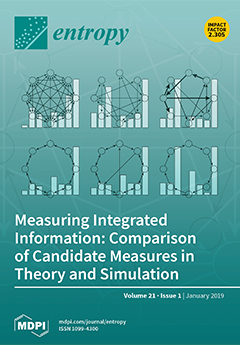We study the localization properties of the eigenvectors, characterized by their information entropy, of tight-binding random networks with balanced losses and gain. The random network model, which is based on Erdős–Rényi (ER) graphs, is defined by three parameters: the network size
N,
[...] Read more.
We study the localization properties of the eigenvectors, characterized by their information entropy, of tight-binding random networks with balanced losses and gain. The random network model, which is based on Erdős–Rényi (ER) graphs, is defined by three parameters: the network size
N, the network connectivity
, and the losses-and-gain strength
. Here,
N and
are the standard parameters of ER graphs, while we introduce losses and gain by including complex self-loops on all vertices with the imaginary amplitude i
with random balanced signs, thus breaking the Hermiticity of the corresponding adjacency matrices and inducing complex spectra. By the use of extensive numerical simulations, we define a scaling parameter
that fixes the localization properties of the eigenvectors of our random network model; such that, when
(
), the eigenvectors are localized (extended), while the localization-to-delocalization transition occurs for
. Moreover, to extend the applicability of our findings, we demonstrate that for fixed
, the spectral properties (characterized by the position of the eigenvalues on the complex plane) of our network model are also universal; i.e., they do not depend on the specific values of the network parameters.
Full article






